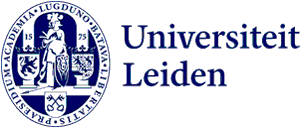
European grant to research Tibetan collection: 'Tibetans' literary output was and is huge'
As a student, university lecturer Berthe Jansen fell under the spell of the Van Manen collection: a collection full of Tibetan writings and objects. A €1.5 million grant now makes it possible to take a really close look at it. 'There is still so much to do and discover.'
As a first-year student of Languages and Cultures of India and Tibet, Jansen often visited the then-existing library of Institute Kern, the national centre of expertise for South Asia and the Himalayas. 'That's where the Tibetan works from the Van Manen collection were microfilmed at the time,' she recalls. 'I was immediately interested in them.'
'You don't read this anywhere'
Dutch Tibetologist Johan van Manen has assembled an extraordinary collection. At the beginning of the last century, he left for India, where he focused on Tibetan Buddhism. With the help of Tibetan assistants, he collected scriptures, but also art, implements of use and life stories. 'Van Manen asked five of his assistants to write down their life stories, but Tibetan is difficult to write, even for native speakers,' Jansen says. 'The assistants therefore wrote down their stories in 'spoken Tibetan'. That makes them unique, as does the cultural context. In Tibetan culture, only religious masters write autobiographies. You don't read the life stories of ordinary Tibetans anywhere.'
Bringing text and object together
Reason enough to delve deeper into the matter. The European Research Council (ERC) awarded Jansen a grant of one and a half million euros to research the entire collection over the next five years. 'When Leiden University acquired the collection, the Museum Volkenkunde (ethnographic museum in Leiden) was part of the university,' Jansen says. 'After they separated, the museum kept all the material objects and the texts went to the University Library. That means you got a weirdseparation between text and object. My research project aims to bring the two back together.'
'It is a puzzle of which we already have a lot of pieces.'
Jansen hopes, on the one hand, to gain more insight into how the collection was put together: what did Van Manen collect and what did he leave out? On the other hand, the research offers a reflection on the social and religious environment of the Darjeeling region and its surroundings, where Van Manen sourced his materials. 'It is a puzzle of which we already have a lot of pieces,' Jansen explains. 'We want to bring those together by digitising the collection and putting it into a database. You should then be able to click on a text, after which you will see the ritual objects that Van Manen has collected along with it, and of course the metadata and context. We hope our project makes it possible to show the material objects better. Currently, there is a very small display at the Ethnographic Museum with fewer than 10 objects by Van Manen. Little is being done with the other 140, because there is currently a lack of expertise on Tibetan art there.'
Showing strength of project
Jansen hopes to fill the gap, although she is realistic about the possibilities the grant will offer her. 'The literary output of Tibetans was and is enormous. No more than eight per cent of it has been translated, and, as a rough estimate, I would say that something has been done on an academic level with a maximum of 20 per centof all this literature. We are just starting with this collection now. I hope to show that projects like this are worthwhile even for a small field like Tibetan Studies, because working with a team pays off. Individually, you could spend a lifetime on such a project and still not have the same skills as other team members. Or, as I wrote in the research application: The sum becomes greater than the parts'.
